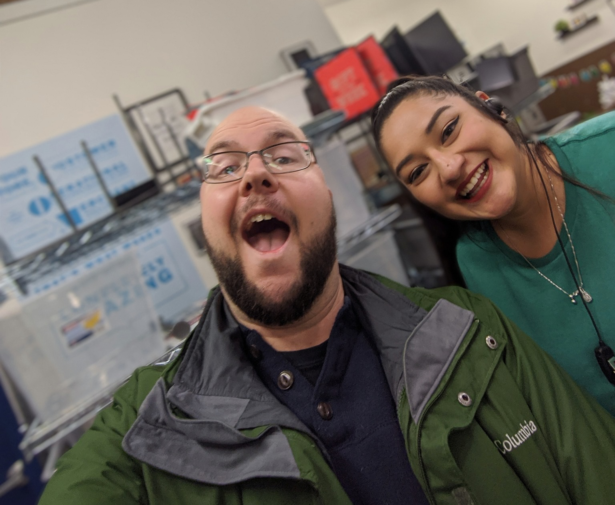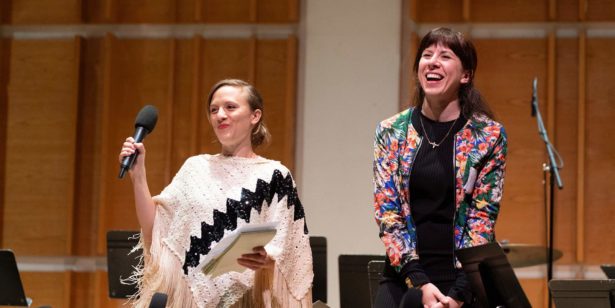
Helping Prisoners Find Their Voice
For one woman, teaching becomes as much an education as an opportunity for service
When a friend of Fonta Hadley’s called to ask whether she’d be interested in volunteering her time to teach communication skills to prisoners at San Quentin, where California’s “death row” population is housed, she—not surprisingly—hesitated. “My safety means a lot. It was a big consideration from that perspective,” she said. “I’ve got three kids, and whatever happens is not just for me.”
But the project seemed such a natural extension of the work Hadley does at Eloquence, the communications training studio she founded in 2005, that in January she said yes, and began working with San Quentin prisoners on a regular basis. “I’ve been teaching them many of the same tools I teach on the outside,” she told Good Turns recently. “Things like making eye contact, what do you with your hands, how do you stand. They’re all on the newspaper staff, and they have to interview people. They are the people that interface with anybody coming in. All the guys I work with are without a doubt the creme de la creme. They are the safe people.”
“You can’t listen with a closed state of being. So what is it about prison that can create that openness?”
And they are eager to learn. “I’m teaching them self-representation,” Hadley said. “I’m teaching them how to speak to somebody else and represent their viewpoint. I’m teaching them speaking. They’ve already got the listening thing down.”
For Hadley, this was part of a fascinating lesson in human nature. “They are some of the most present people that I’ve ever met in my life,” she said. “They look at you, and they see you. I teach listening and presence, and those two things are obviously linked. You can’t listen with a closed state of being. So what is it about prison that can create that openness?”
“In prison you have three options. In one, you either are going to kill yourself, or someone inside will kill you. We’ve talked about this a lot in the class. In the second option, you live in denial. You say, I didn’t do it, it’s not my responsibility.”
“In the third option, you take responsibility, and you try and redefine yourself as you go. A lot of my guys are lifers. They’re in for murder. They killed somebody and they’re going to do time for their whole life. A lot of them have been in 20, 30, 40 years. And in this third tier, they have to say to themselves, I’ve done this, and I have to figure out a way to live with myself. Which means you’ve got to take a long hard look and you have to redefine yourself.”
The experience is in sharp contrast to a lot of what happens “on the outside,” needless to say, though not always for the reasons you might expect. “We live in such a distraction economy, where all we’re doing is distracting ourselves from being with ourselves,” Hadley said. “People are in a highly distracted state of being, physically. They can’t sit still. A lot of what I teach on the outside is so basic. How do you sit still when you talk to somebody? Because their body is going crazy, their hands are fussing, they’re twitching, their butts are moving back and forward in their chair, they’re fussing with their rings, they’re playing with their watches. Or they’re completely disembodied and they talk in a way that they’re not connected to their body at all.”
But the prisoners Hadley works with, because of restrictions on the public information that can enter the prison, have almost no contact with technology at all. “They don’t have that distraction. They don’t have that influx of the outside world constantly, and it’s not directing their behavior,” she said. “They are directing their own behavior, and that affects your level of presence.”
“They’re extraordinary listeners. It’s a very social environment. In prison you’re never alone. So you’ve got to work through your shit with other people around. But if you have to be with yourself, you do that in quiet. If you have to wrangle with yourself, you do that in quiet. So they have a relationship to quiet and they have a relationship to listening as a result. They can be quiet. People on the outside are so scared of quiet, they are so scared of silence, that they fill it, fill it, fill it, with extraneous words. They’re so afraid of not being seen and heard.”
“That is why we communicate: to be seen and heard,” Hadley said. “So when you go inside and look at somebody, and they look at you on a real fundamental level, there’s an exchange. That’s a gift. They are going to see you. There’s no question that when you go in, you are a gift to them, and they’re going to treat you that way.”
And Hadley’s work is a gift—in the form of a powerful example—to all of us. So the next time you’re talking with someone, wherever you are, stop fussing with your watch and looking at your phone and do them the favor of listening—of really seeing and hearing them. It’s an easy, but powerful, good turn, and you don’t have to risk your safety to do it.
Posted March 16, 2018





